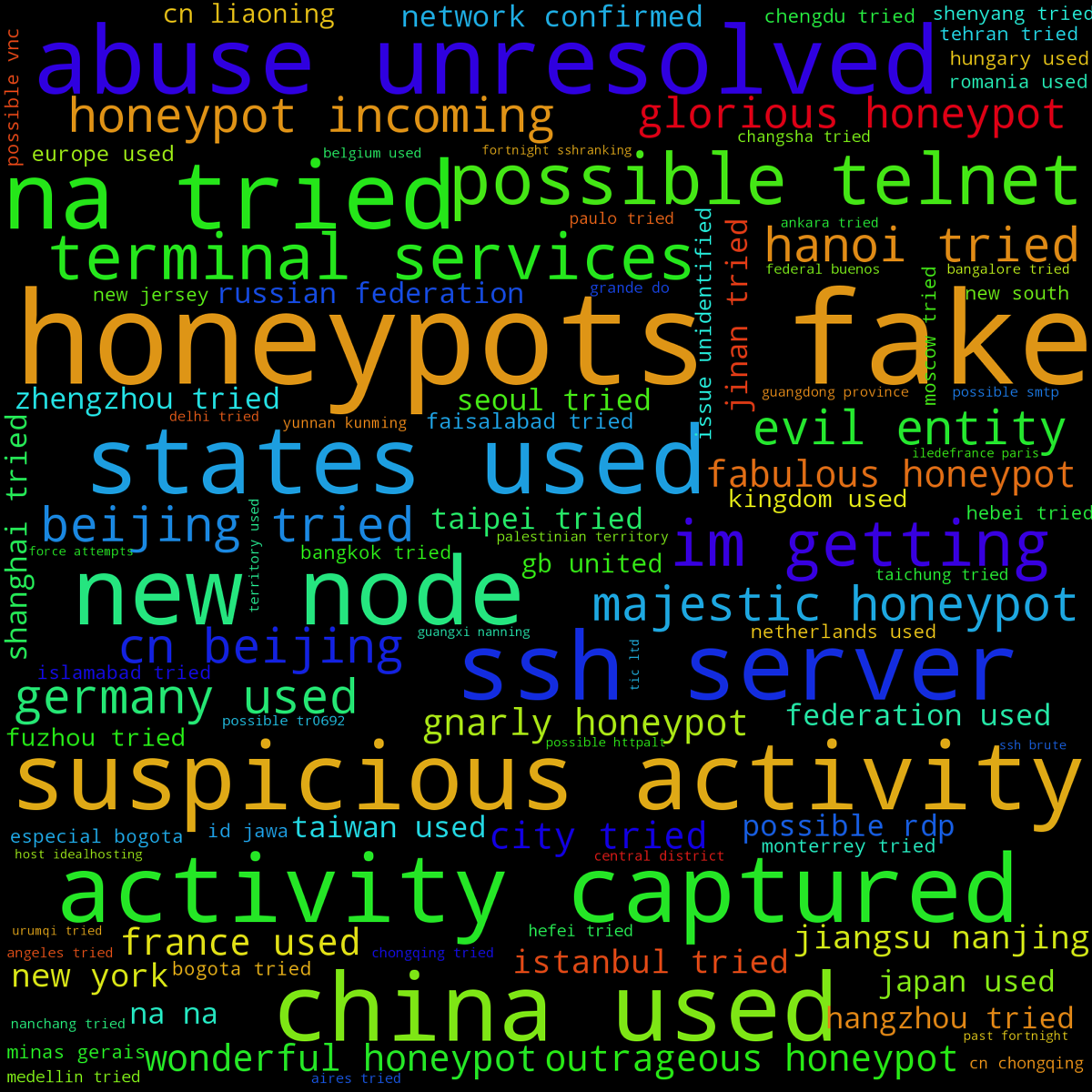One of the most common questions I get is, “Where does attack traffic come from?”. I want to present a quick and dirty answer, just to show you how diverse illicit traffic sources are.
To give you a glimpse into that, here is a list of the top 20 ISPs, based on the number of unique malicious source IP addresses who touched one of my HoneyPoint deployments in a single 24 hour period.
The list:
9 korea telecom
7 hinet
6 dynamic distribution ip’s for broadband services ojsc rosteleom, regional branch “urals”
5 sl-reverse
5 sfr
5 rr
5 chinanet jiangsu province network china telecom no.31,jingrong street beijing 100032
5 china mobile communications corporation mobile communications network operator in china internet service provider in china
4 turknet-dsl
4 superonline
4 sbcglobal
4 chinanet jiangsu province network china telecom 260 zhongyang road,nanjing 210037
3 zenlayer inc
3 virginm
3 verizon
3 totbb
3 jsc rostelecom regional branch “siberia”
3 intercable
3 comcastbusiness
3 comcast
3 charter
3 broadband multiplay project, o/o dgm bb, noc bsnl bangalore
3 as13285
As you can see by the above, the list is pretty diverse. It covers sources in many countries and across both domestic and foreign ISPs. In my experience, the list is also pretty dynamic, at least in terms of the top 10-20 ISPs. They tend to spike and fall like waves throughout different time periods. One of these days, maybe I will get around to visualizing some of that data to get a better view of the entropy around it. But, for now, I hope this gives you an idea of the diversity in sources of attacks.
The diversity also makes it very difficult to baseline log activity and such. As such, there may be some effective risk reduction in blocking ISPs by netblock, if your organization can tolerate the risk associated with doing so. But, more on that in another post. Hit me up on Twitter (@lbhuston) and let me know what your firm’s experience with that type blocking has been; if you’ve tried it or are doing it today. I’d love to hear if it reduced log noise, made traffic modeling easier or led to any specific risk reductions.
Thanks for reading!

